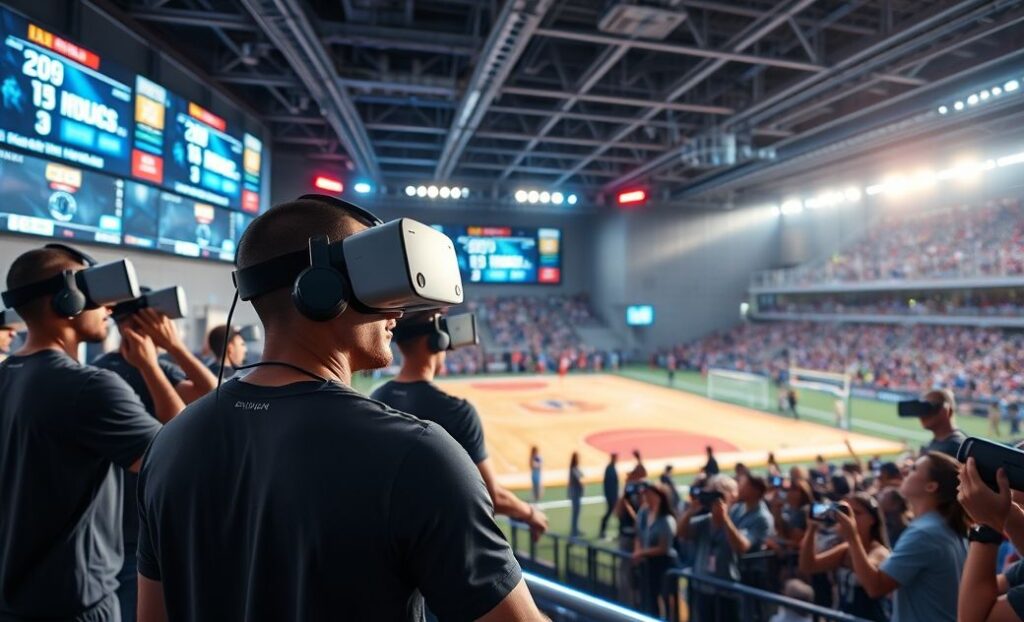Virtual reality (VR) technology has evolved swiftly, carving out a significant role in various industries, including sports. Its application is not limited to gaming and entertainment; VR is making waves in sports training and fan engagement, bringing revolutionary changes to both athletes’ performance and sports enthusiasts’ experiences.
Enhancing Sports Training Through Virtual Reality
Virtual reality offers athletes a unique platform to improve their skills by providing realistic training environments that mimic real-life scenarios. This innovation allows for comprehensive analysis and feedback without the physical demands or risks associated with traditional training methods.
Simulated Practice Environments
VR creates highly detailed simulations of game conditions, enabling athletes to refine techniques and tactics. For instance, quarterbacks in American football can practice reading defenses, decision-making, and execution without the risk of injury. This immersive environment helps in fine-tuning their reflexes and decision-making speed.
Analyzing and Enhancing Performance
Coaches can leverage VR to analyze athletes’ performances comprehensively. By replicating matches, VR systems can track movements and provide in-depth feedback. This data-driven approach allows for the identification of areas needing improvement, facilitating a targeted improvement strategy that can accelerate an athlete’s growth.
Rehabilitation and Injury Prevention
In the realm of sports medicine, VR serves as a practical tool for rehabilitation. Athletes recovering from injuries can engage in simulations that gradually build up physical activity without straining healing injuries. Additionally, VR can assist in diagnosing potential injury risks by tracking motion patterns and suggesting preventive measures.
Revolutionizing Fan Engagement with Virtual Reality
VR is not just an athlete’s ally; it serves as a bridge between sports teams and their fan base, enhancing the fan experience and engagement through unparalleled immersion and interaction.
Immersive Viewing Experiences
For fans, VR delivers an engaging, immersive viewing experience that makes them feel as though they’re actually at the event. Through VR headsets, fans can enjoy live games from the comfort of their homes, experiencing them from various camera angles, including courtside and on-field views, which provide a unique perspective unmatched by conventional broadcasting.
Interactive Entertainment
Beyond viewing, VR offers interactive experiences, such as sports-themed games and virtual meet-and-greets with athletes, enhancing fan interaction. Such features deepen fans’ personal connections to their favorite sports and teams, transforming passive viewers into active participants in the sports narrative.
Augmented Reality and Merchandise
Integrations of VR with augmented reality (AR) allow fans to explore virtual shops where they can visualize merchandise like never before. This engagement streamlines the purchasing process and introduces a new layer of excitement in owning sports memorabilia.
Future Prospects of Virtual Reality in Sports
The future of VR in sports promises even more groundbreaking applications. Continuous developments in VR technology could lead to hyper-realistic simulations, further decreasing the difference between virtual and real experiences. As VR technology becomes more accessible, its adoption across different facets of sports will likely continue to grow.
In conclusion, virtual reality is reshaping the landscapes of sports training and fan engagement. As the technology continues to evolve, it will play an increasingly pivotal role in how sports are played, viewed, and experienced, offering endless possibilities for both athletes seeking to enhance their performance and fans eager for immersive interactions.
